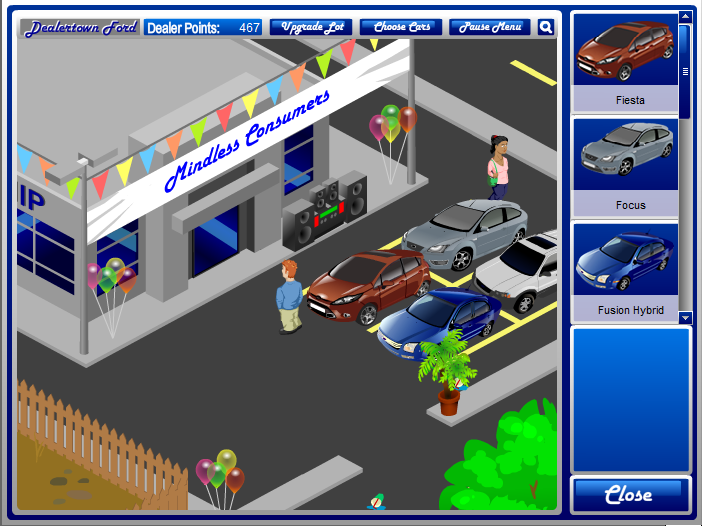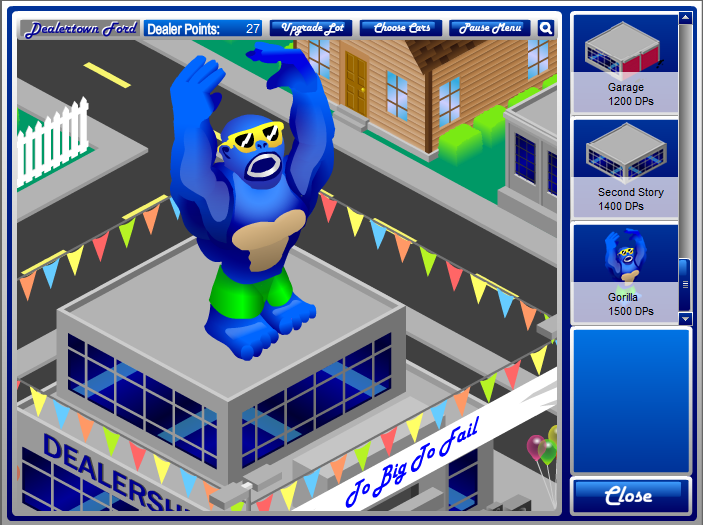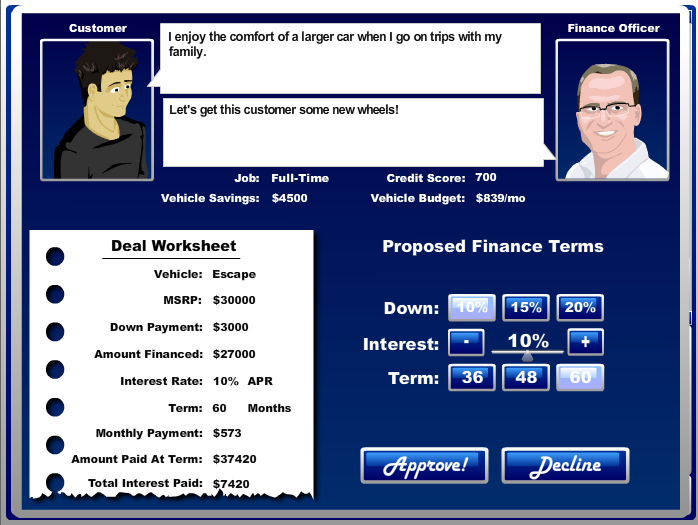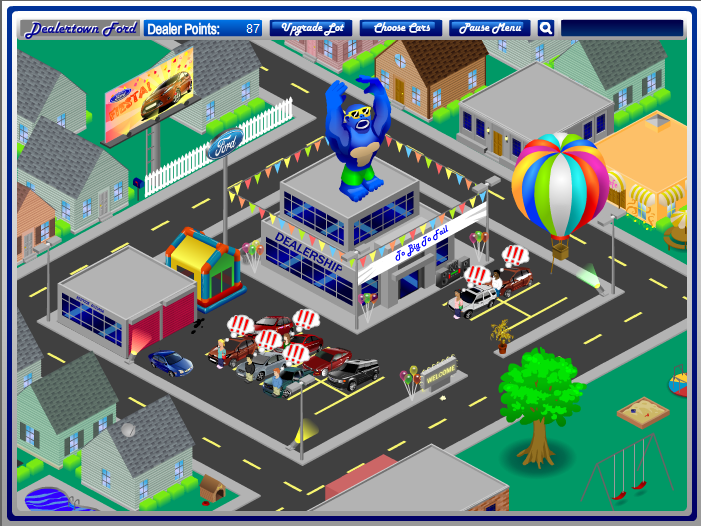Introduction
Dealertown Ford is a point and click strategy game in which the player is tasked with running a successful Ford car dealership.
Below is a detailed analysis of this game roughly following Brian Winn's1 Design/Play/Experience framework, including:
Learning
-Teach players about vehicle financing
-Teach players about personal financing
-Learn the vocabulary involved with purchasing a vehicle
Storytelling
The game takes place inside a small fictional town with the player's car dealership in the center. The player is given two mentors to assist in learning about how to play the overall game of running a dealership and how to sell cars to the various customers. Since it is a new dealership the game starts with cheaper cars and a small empty lot which the player gradually fills and expands. The story takes an almost cartoonish approach to running a dealership in which players "improve" the lot by purchasing balloons, signs, and playgrounds. This does not hurt the learning goals since the game is primarily about teaching financing vehicles. The "improvements" do add to the enjoyment of the game in that there is an immediate visual reward for playing the game and incentive to continue playing to see how much you can complete.

Gameplay
There are two different sections to the gameplay in Dealertown Ford. In the larger view of running a dealership the game makes the player click on trash to clean up the lot, choose which cars to place in the lot, and choose which improvements they wish to purchase. The gameplay here is not important to the learning goals and only serves to connect together the mini-games in which the player approves or denies the sale of a car. In the sale between the player and the NPC the financial advisor mentor appears and will explain any term on screen when the player hovers the cursor over a word. It is in the sale mini-game that the player learns, through trial and error, about what the appropriate percent down payment, percent APR, and repayment schedules are. There are no real punishments for making incorrect decisions besides not gaining the dealership points that the player would have gotten for making a better decision. This makes it easier for the player to continue playing despite being almost guaranteed to make the wrong decision many times throughout the game. In this way the gameplay reinforces the leaning goals while keeping the player incentivized through rewards in the dealership management game.

User Experience
The player is given very few menus and there are only two states to the interface that correspond with the two types of gameplay. In the dealership management section the player can view the town in its entirety and can click on various objects and people to interact with them or on the cars/improvements menus which slide in on the right hand side of the screen. Once selected the appropriate area where the car/improvement can be placed is highlighted. During the car sale mini-game the screen is covered in information about the customer and the player's financial positions. By adjusting sliders for APR, percent down payment, and repayment schedule the player can try to find the correct values to benefit both the player and customer or can decide not to approve the deal if the customer is not in the right financial situation. The learning occurs in the sales mini-game due to the depth of information presented and the feedback from the financial advisor mentor.

Technology
Dealertown Ford is a web based flash game played on a computer using a mouse. The technology was not limiting and helped the game be easily available for mass distribution on Ford's websites.
Assessment
There doesn't appear to be any formal or informal assessments of the game. An informal experiment in which the players are given a pre and post test questionnaire would be enough to show learning resulting from the game.
Conclusion
Overall the game does a good job of teaching and reinforcing vehicle financing and to a lesser extent personal financing. The mentors are always quick to point out that the dealership will lose money if the player makes poor decisions but since there is no reinforcement from the customer's perspective the player may not apply what they learn to their own financial situation. Less focus on maintaining the lot and more focus on the details of purchasing a car would almost certainly result in a greater understanding of the logistics involved in buying a car but may hurt the immersion of the game. The game accomplishes its goal of teaching the player about vehicle financing but could do more in teaching players to apply those lessons to themselves.
